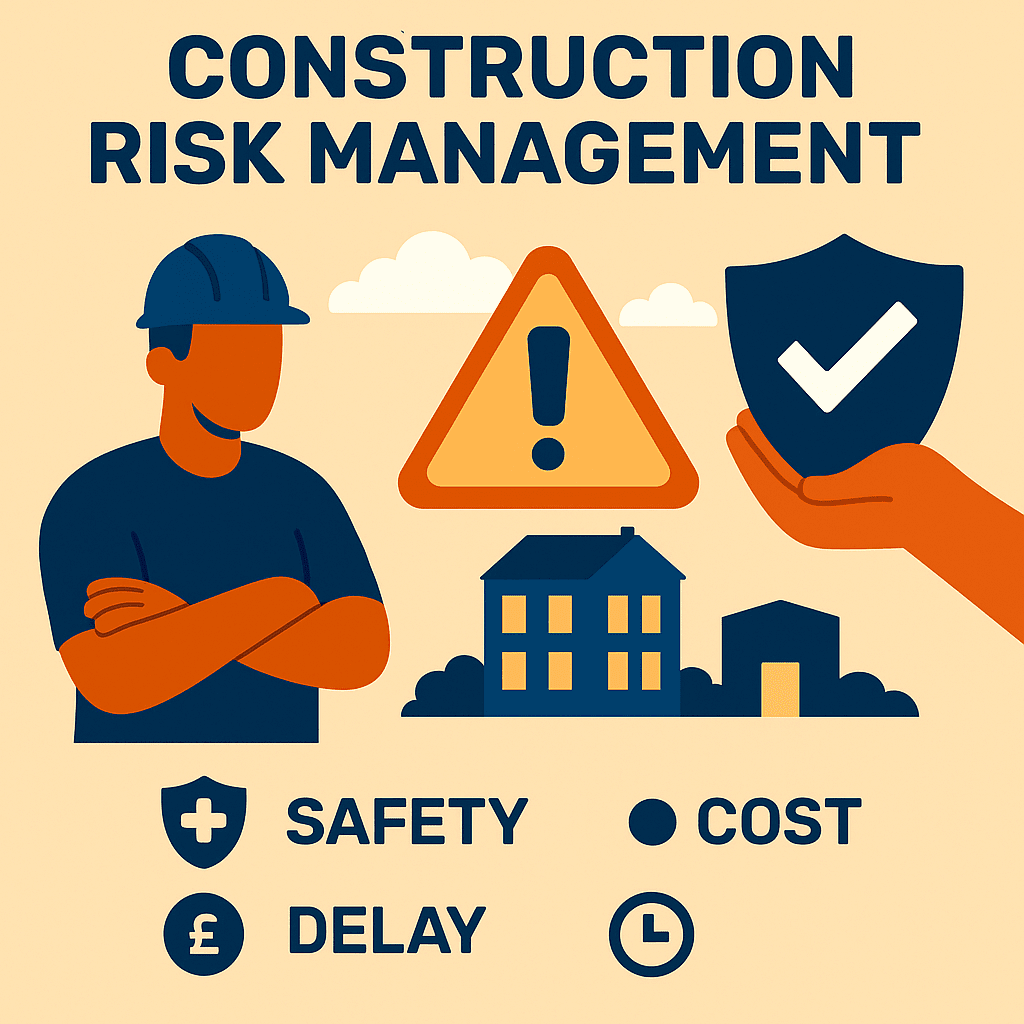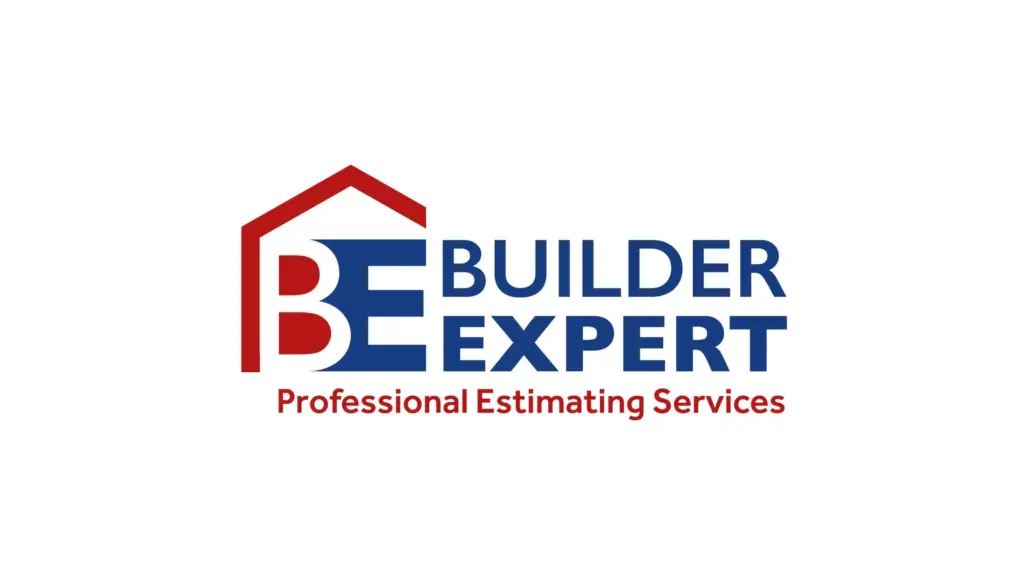In the world of construction, even the smallest oversight can snowball into delays, cost overruns, and frustrated clients. That’s where construction risk management comes in. Far from being a last-minute damage control exercise, it’s a proactive approach to spotting problems before they happen — and putting solutions in place to keep projects on track.
Effective construction risk management isn’t just about identifying hazards; it’s about anticipating challenges, evaluating their potential impact, and creating action plans to avoid or minimise disruption. Whether you’re building a single-family home or managing a multi-million-pound development, the principles remain the same: clarity, foresight, and adaptability.

At BuilderExpert, we believe that risk prevention starts with accurate estimates, realistic schedules, and transparent communication. With tools like our Detailed Construction Estimate and Real-Time Construction Pricing, you can see potential budget or timeline risks before work even begins — giving you the power to make informed decisions early.
Types of Risks in Construction
Understanding the types of risks you might face is the first step in effective construction risk management. By categorising them, you can create targeted prevention and mitigation strategies instead of reacting blindly when problems arise.
1. Financial Risks
These involve anything that threatens the project’s budget. Common causes include:
- Unexpected material price increases (e.g., timber or steel)
- Currency fluctuations for imported goods
- Overlooked costs in the initial estimate
Using tools like our Basic Construction Estimate helps reduce financial surprises by providing a realistic, itemised breakdown before work starts.
2. Schedule Risks
A delayed schedule can quickly snowball into cost increases and strained client relationships. Schedule risks often come from:
- Poor initial planning
- Weather disruptions
- Delays in planning approvals
- Shortages in skilled labour
By integrating construction risk management practices with our Construction Project Timeline planning tools, you can spot potential bottlenecks in advance.
3. Safety Risks
From minor accidents to major site injuries, safety issues can halt work entirely. Risk sources include:
- Inadequate safety protocols
- Poor site supervision
- Faulty or unmaintained equipment
A safety-first approach not only protects your workers but also prevents expensive legal and insurance complications.
4. Legal and Compliance Risks
Ignoring or misunderstanding building regulations can result in stop-work orders, fines, or costly rework. These risks are often tied to:
- Planning permission mistakes
- Building code violations
- Environmental restrictions
Using a compliance checklist during planning is a cornerstone of construction risk management.
5. Quality Risks
Poor workmanship or substandard materials can lead to defects, warranty claims, and reputational damage. These often occur when:
- Work is rushed to meet deadlines
- Inadequate quality checks are performed
- There’s no clear specification for finishes and materials
Proactive Risk Identification and Assessment
In construction risk management, identifying risks early is the single most powerful way to prevent costly delays. This process involves actively looking for vulnerabilities in your plan, design, and execution before they turn into major setbacks.
Conducting a Risk Workshop
Before breaking ground, gather your project manager, site supervisor, subcontractors, and key suppliers for a structured risk workshop. Discuss potential threats at every stage — from planning permissions to final inspections — and document each one.
A shared risk log ensures everyone is aware of possible issues and knows how to respond if they occur.
Using Historical Data
Past projects can provide a goldmine of insight. Review previous builds to see:
- Where delays occurred
- Which suppliers caused problems
- Which weather patterns affected progress
BuilderExpert clients can integrate this step into their workflow using our Construction Estimate Example as a baseline for spotting cost or timeline risks.
On-Site Inspections Before Work Starts
A thorough site assessment reduces unexpected discoveries once work begins. Check for:
- Drainage and soil stability
- Access issues for heavy machinery
- Proximity to neighbouring properties or protected land
By identifying these physical risks upfront, you can adjust plans, timelines, and budgets without sudden shocks.
Assigning Risk Owners
Every risk should have a named person responsible for monitoring and responding to it. This creates accountability and faster decision-making when issues arise.
Strategies for Minimising Risks Before They Happen
In construction risk management, prevention is always cheaper than cure. By putting proactive strategies in place, you can stop small issues from turning into major delays.
1. Build Realistic Timelines
Overly optimistic schedules are one of the fastest ways to derail a project. Instead, factor in buffer time for weather, supply delays, and unexpected design changes. This doesn’t mean padding the schedule excessively — just being honest about what’s achievable.
Our Construction Project Timeline UK guide outlines realistic durations for different build types, helping you plan more accurately from the start.
2. Secure Reliable Suppliers and Subcontractors
The best risk management starts with working only with proven, dependable teams. Check references, confirm lead times, and have written agreements in place before starting.
3. Use Digital Planning and Tracking Tools
Modern construction management software allows you to track progress in real time, compare it against your schedule, and flag risks instantly. Tools like BuilderExpert’s Real-Time Construction Estimating Software let you connect costs, schedules, and material orders, so you see the impact of any change immediately.
4. Prepare Contingency Budgets
Even with the best planning, unexpected costs will arise. Setting aside 5–10% of your total budget as a contingency can prevent funding issues if you need to address problems mid-build.
5. Maintain Transparent Communication
Clear, regular updates with clients and the project team help spot concerns early. Miscommunication often causes more delays than the actual problems themselves.
Contingency Planning — What to Do When Things Go Wrong
Even the most thorough construction risk management plan can’t prevent every setback. The difference between a small hiccup and a full-blown crisis often comes down to how quickly and effectively you respond.
Step 1: Identify the Problem Immediately
As soon as an issue arises — whether it’s a delayed delivery, unexpected ground conditions, or a subcontractor pulling out — log it in your project records. Digital tools like BuilderExpert’s Detailed Construction Estimate make it easier to connect the impact to your budget and schedule instantly.
Step 2: Assess the Impact
Not all risks require drastic action. Determine whether the issue affects cost, time, quality, or all three. This helps you decide on the right level of response.
Step 3: Explore Alternative Solutions
- Material delays? Source equivalent products from secondary suppliers.
- Weather-related delays? Shift focus to indoor work until conditions improve.
- Labour shortages? Bring in vetted subcontractors from your backup list.
Step 4: Communicate the Change
In construction risk management, keeping stakeholders informed is as important as fixing the problem itself. Share revised schedules, cost changes, and the plan for getting back on track.
Step 5: Document Everything
Keeping a clear record of how risks were handled protects you legally and builds trust with clients. If disputes arise, having a documented trail of your decisions is invaluable.
Building a Risk-Resilient Team
Strong construction risk management doesn’t happen in isolation — it’s the product of a well-prepared, well-communicated, and adaptable team. The people you choose to work with will determine how effectively risks are spotted, addressed, and prevented.
Choose the Right People from the Start
Recruiting skilled, reliable workers is the foundation. Whether hiring employees or subcontractors, look for proven track records in meeting deadlines and handling challenges calmly. Don’t just rely on CVs — check references and past project outcomes.
Train for Proactive Problem-Solving
A team that can identify risks before they escalate is invaluable. Hold regular training sessions on spotting common risks such as site safety hazards, equipment failures, or supply chain issues. This builds a culture of risk awareness, making it second nature for workers to flag concerns early.
Establish Clear Communication Channels
Good construction risk management thrives on information flow. Create defined communication paths for reporting issues — whether through daily site briefings, digital reporting tools, or a designated risk manager. The faster a risk is reported, the faster it can be addressed.
Foster Collaboration Over Blame
When risks turn into problems, avoid a blame culture. Instead, encourage open discussion about what went wrong and how to prevent it in the future. This approach promotes learning and improves overall team resilience.
Recognise and Reward Risk Awareness
Celebrating when someone spots and prevents a major risk during construction risk management reinforces proactive behaviour. Small incentives, public recognition, or even a simple “thank you” can strengthen this mindset.
By surrounding yourself with people who are skilled, proactive, and communicative, you turn your team into a built-in safety net — one that catches potential problems before they cause costly delays.
Conclusion: Proactive Planning Protects Your Build
In the fast-paced world of construction, problems are inevitable — but costly delays are not. The difference lies in how well you implement construction risk management from day one.
By identifying risks early, developing contingency plans, maintaining clear communication, and surrounding yourself with a skilled team, you set the stage for smoother, more predictable projects. Construction risk management isn’t just about preventing disasters — it’s about ensuring quality, protecting budgets, and maintaining client trust.
Modern tools such as real-time pricing, detailed estimates, and digital scheduling further strengthen your construction risk management process, giving you the ability to foresee and solve problems before they escalate. With these in place, every stage of your build becomes more transparent, manageable, and efficient.
Whether you’re overseeing a small home renovation or a large-scale development, making construction risk management a priority will:
- Reduce the likelihood of unexpected delays
- Keep costs under control
- Improve safety and compliance
- Boost your reputation as a professional who delivers on promises
The best builders know that prevention is always cheaper than correction. By embedding construction risk management into your workflow, you turn risk into an opportunity — an opportunity to prove your expertise, protect your profits, and deliver results that exceed expectations.
Stay Connected with BuilderExpert
For more insights, tools, and tips on improving your building projects, follow BuilderExpert on social media:
- Facebook – Join our community of builders and homeowners sharing advice and solutions.
- LinkedIn – Connect with industry professionals and keep up with the latest construction trends.

